What Is Freelancing and How Can You Get Started
Freelancing! You’ve probably heard the term more frequently in recent years, owing to the growing popularity of this dynamic work model. But what is freelancing, and how can you get involved?
Freelancing refers to professionals who work independently and provide services to clients based on a project basis. Unlike traditional employment, freelancers have the flexibility to choose who they work with, what projects they take on, and often, when and where they work.
The question, “What is freelancing?” has become increasingly common as this mode of work garners more attention and acceptance. More and more professionals across various fields are embracing freelancing as an attractive career option, drawn in by flexibility, autonomy, and the ability to handpick rewarding work.
This blog post aims to provide a clearer understanding of what freelancing is and offer useful advice and actionable tips on how to dive into it. If you want to supplement your income or are considering a career shift, this post is for you. It will guide you through the freelancing world and help you get started. You’ll also learn how to navigate the thriving freelance landscape successfully.
The Basics: What Is Freelancing?
To better understand the basics of freelancing, let’s delve into its core concepts, characteristics, and advantages.
Freelancing involves self-employed professionals who provide services to clients based on their expertise. These individuals, known as freelancers, typically charge clients on a per-project basis and maintain an autonomous work environment.
Key Characteristics of Freelancers
Freelancers possess several distinct characteristics that set them apart from conventional employment:
Independence: They work on their terms without being bound to a single employer.
Flexibility: Freelancers enjoy the flexibility of choosing when and where they work. They can set their schedules and work from the comfort of their homes or wherever they prefer.
Diverse opportunities: Freelancers can cultivate a broad range of skills and experiences by working with multiple clients.
Project-oriented: Freelance work revolves around short-term or long-term projects, allowing a varied work portfolio.
Advantages of Freelancing
Understanding what freelancing is entails recognizing its unique benefits, such as the following:
Autonomy: Freelancers can set goals, work at their preferred pace, and prioritize their projects.
Income potential: With no fixed salary, freelancers can increase their earnings by taking on more projects or finding higher-paying clients.
Personal growth: Freelancing offers many growth and skill development opportunities through working on diverse projects and with varied clients.
Job satisfaction: Freelancers can find greater job satisfaction and fulfillment by choosing projects that align with their passion and interests.

Types of Freelancing
When delving into what is freelancing, it becomes clear that it isn’t a one-size-fits-all career choice. Instead, freelancing operates across various professions, platforms, and models– each with unique opportunities and challenges. Let’s uncover the distinct types of freelancing and evaluate their pros and cons.
A. Freelance Professions
Understanding what is freelancing also means understanding the diversity of professions it touches. Freelancing spans numerous fields, such as:
Writing: Freelance writers craft various kinds of content including blog posts, articles, copywriting, and more.
Design: Graphic designers, web designers, and interior designers can offer services on a freelance basis.
Coding: Freelance software developers and programmers are in high demand, contributing to apps, websites, and software projects.
Marketing: Freelance digital marketers offer SEO, social media marketing, and ad campaign services to businesses.
B. Gig Platforms vs. Direct Clients
The freelance market also varies in terms of how freelancers find their gigs. Some choose platforms like UpWork, Fiverr, or Freelancer, which connects freelancers with clients. In contrast, others prefer working directly with clients, often leveraging or expanding their network through active outreach.
C. Pros and Cons of Different Freelancing Types
Different freelancing types come with their unique set of benefits and challenges:
Guaranteed Payment: Platforms protect freelancers from non-payment, but direct clients don’t offer the same security. However, building a relationship with direct clients can lead to higher pay.
Control Over Jobs: Freelancers can choose their projects on platforms. However, with direct clients, there may be a chance for more long-term and substantial projects.
Competition: Gig platforms are saturated with freelancers, making competition fierce. Direct clients offer less competition but require more extensive networking skills.
How Does Freelancing Work?
The mechanics of freelancing can be intimidating for beginners, but once broken down into manageable steps, everything falls into place. Let’s unravel the process step-by-step.
A. Finding Freelance Opportunities
The journey into freelancing often begins with finding the right opportunities. Numerous online platforms, such as UpWork, Fiverr, and Freelancer, post hundreds of jobs daily across various fields. Online and offline networking is also a powerful tool for finding freelance gigs.
B. Building a Freelancer Profile
Once you’ve understood what is freelancing and where to find jobs, the next step is to create an impressive freelancer profile. It should showcase your skills, previous work, testimonials, and anything else that could prove your professional worth. Treat your profile as your dynamic digital CV.
C. Bidding on Projects
After setting up your profile, you’re ready for project bidding. This step involves exploring posted projects, selecting ones that align with your skills and interests, and then making a detailed proposal for the job. Crafting a compelling proposal is essential to standing out in the crowd.
D. Setting Freelance Rates
One of the most critical aspects to consider is setting your rates. This typically depends on your expertise, the market rate for your services, and how much value you can provide to your clients. Remember to factor in your non-billable hours and business expenses, too.
Freelancing Tools and Platforms
A successful freelancing career is built on a foundation of reliable tools and platforms coupled with effective financial management. Let’s look into some popular freelancing websites, essential tools and software, and tips to manage your finances efficiently.
A. Overview of Popular Freelancing Websites
Freelancing platforms connect professionals with a wide range of projects and clients. Some of the widely-used freelancing websites include:
UpWork: UpWork is a popular platform for diverse talents, widely recognized for long-term and short-term projects in fields like writing, design, programming, and marketing.
Fiverr: Fiverr focuses more on smaller, one-off projects or gigs, making it a great place for freelancers to build their portfolios quickly.
Freelancer: Freelancer is similar to UpWork, offering sizeable opportunities across various fields, with features like contests, which allow these independent contractors to showcase their skills and win projects.
B. Essential Tools and Software for Freelancers
Streamline your work and enhance productivity with the following tools and software:
Task management: Tools like Trello, Asana, and Todoist can help you keep track of your projects, deadlines, and tasks with ease.
Time tracking: Track your working hours with apps like Toggl, Harvest, or Clockify to ensure transparent billing.
Communication: Collaborate seamlessly with clients via Slack, Zoom, or Skype.
File storage: Keep your work organized and secure with cloud storage options like Google Drive, Dropbox, or OneDrive.
C. Managing Finances as a Freelancer
Effective financial management is vital for a thriving freelancing career:
Track your income and expenses: Use QuickBooks, FreshBooks, or Wave accounting software to monitor cash flow.
Pay their taxes: Freelancers are responsible for paying their taxes. Use tax calculators like TaxAct to estimate and save accordingly.
Invoice your clients: Create professional invoices using dedicated invoicing tools like Invoice Ninja, Zoho Invoice, or AND.CO.
Incorporating the right freelancing websites, essential tools and software, and efficient financial management practices into your routine will lay the foundation for a successful and sustainable freelancing career.
Challenges and Pitfalls of Freelancing
While freelancing offers immense freedom and flexibility, it does come with its fair share of challenges and pitfalls. Let us shed light on a few key hurdles freelancers may face— irregular income, dealing with difficult clients, and maintaining a work-life balance— providing practical suggestions to tackle each.
A. Irregular Income and Financial Planning
One of the most significant challenges freelancers face is the inconsistency and unpredictability of their income. Unlike a traditional job with a fixed monthly salary, freelancing income depends on the number and size of projects secured. This inconsistency can pose hurdles to regular financial planning and investments.
How to Navigate: Savvy financial management can act as a buffer against this inconsistency. Try to have a financial safety net for slow periods, invest wisely, and plan your expenses according to your lowest expected income.
B. Dealing with Difficult Clients
Freelancing involves interacting with many clients, and not all experiences are pleasant. Difficult clients can be extremely demanding, late payers, or even nebulous in their project expectations.
How to Navigate: Clear communication with clients from the project’s outset can reduce misunderstandings. Discuss expectations, deadlines, revisions, and payment terms explicitly. Don’t hesitate to dismiss clients if their proposals seem unmanageable or unfair.
C. Maintaining Work-Life Balance
The flexibility of freelancing can sometimes blur the lines between professional and personal life. It may lead to cases where you find yourself working around the clock or not taking time off for relaxation.
How to Navigate: Setting strict office hours, creating a dedicated workspace, and taking regular breaks can help maintain a healthy work-life balance. Remember to set aside time for physical activities, hobbies, family, and friends.

Freelancing in Different Industries
Freelancing has permeated many industries, offering professionals independence and the opportunity to work on diverse projects. Now, let’s talk about freelancing applications in various sectors, such as writing, graphic design, and IT, accompanied by industry-specific tips and considerations to help you easily navigate your freelance career.
A. How Freelancing Applies to Various Sectors
Freelancing has reshaped the professional landscape, enabling people from different industries to offer their services independently. Here are a few examples:
Writing: Freelance writers work on diverse content formats, including blog posts, articles, copywriting, and technical documentation.
Graphic Design: Graphic designers create visual elements for their clients, such as logos, branding materials, and promotional graphics.
IT & Programming: Freelance IT professionals provide on-demand services, such as software development, web development, and mobile app creation.
B. Industry-Specific Tips and Considerations
Each industry comes with unique nuances and opportunities. To succeed in your respective field, it’s crucial to equip yourself with industry-specific insights:
Freelance Writing
Tip: Diversify your writing skills, adapting to different formats and styles.
Consideration: Building a robust portfolio, including various content types, will demonstrate your versatility and expertise to potential clients.
Freelance Graphic Design
Tip: Continuously update and improve your design skills by learning new software and staying on top of design trends.
Consideration: A visually stunning portfolio highlighting your design projects helps capture and impress clients’ attention.
Freelance IT & Programming
Tip: Acquire fluency in multiple coding languages and master relevant tools or frameworks.
Consideration: Showcase your technical prowess by collaborating on open-source projects or developing demonstrative apps or websites.

Freelancing Trends and Future Outlook
The freelancing industry is always evolving, influenced by technological advancements, shifting work preferences, and global events. Let’s proceed into emerging industry trends and provide predictions for freelancing’s future.
A. Emerging Trends in the Freelancing Industry
Rise of Remote Work: In light of events like the COVID-19 pandemic, working remotely has become commonplace and is likely to persist, furthering the growth of freelancing opportunities.
Skill Diversification: Modern businesses value freelancers with diverse skill sets. Multifaceted freelancers who excel in more than one field are increasingly preferred.
Digital Nomadism: With just a laptop and an internet connection, freelancers can work from anywhere, encouraging a rise in digital nomadism.
More Focus on Mental Health and Maintaining A Work-Life Balance: Freelancers understand the value of balancing mental wellness and work, making it a key topic. Prioritizing health and setting boundaries is critical for a fulfilling freelance career.
B. Predictions for the Future of Freelancing
Growth of Freelance Platforms: As more businesses understand the value of outsourcing and are comfortable working with remote teams, platforms connecting freelancers with opportunities will continue to grow.
AI and Automation: With Artificial Intelligence (AI) and automation gaining momentum, freelancers must upgrade and adapt their skills to continue providing value in a changing work landscape.
Greater Regulation and Legal Protection: As freelancing becomes more prominent, the need for regulatory policies and legal protection for freelancers will likely increase, contributing to a safer freelancing environment.
Value for Specialization: While skill diversification is crucial, specialized skills in emerging sectors like data science, AI, and blockchain could command premium rates.
Conclusion
In conclusion, our exploration of freelancing has provided valuable insights into its benefits, potential challenges, industry-specific applications, current trends, and future outlook.
To reiterate, freelancing represents a flexible, independent approach to work, catering to various industries like writing, graphic design, marketing, and IT. However, it is crucial to be well-prepared for its challenges, such as irregular income and work-life balance.
If you’ve been asking yourself, “what is freelancing, and is it right for me?” we hope our discussion has brought you closer to an answer. Embracing freelancing can drive you into an exciting world of opportunities where you can build a fulfilling career on your terms.
If you have any questions or require personalized guidance on your freelance path, feel free to contact our team. Remember, self-discovery starts with asking, “what is freelancing?” and diving headfirst into understanding and exploring its potential.



